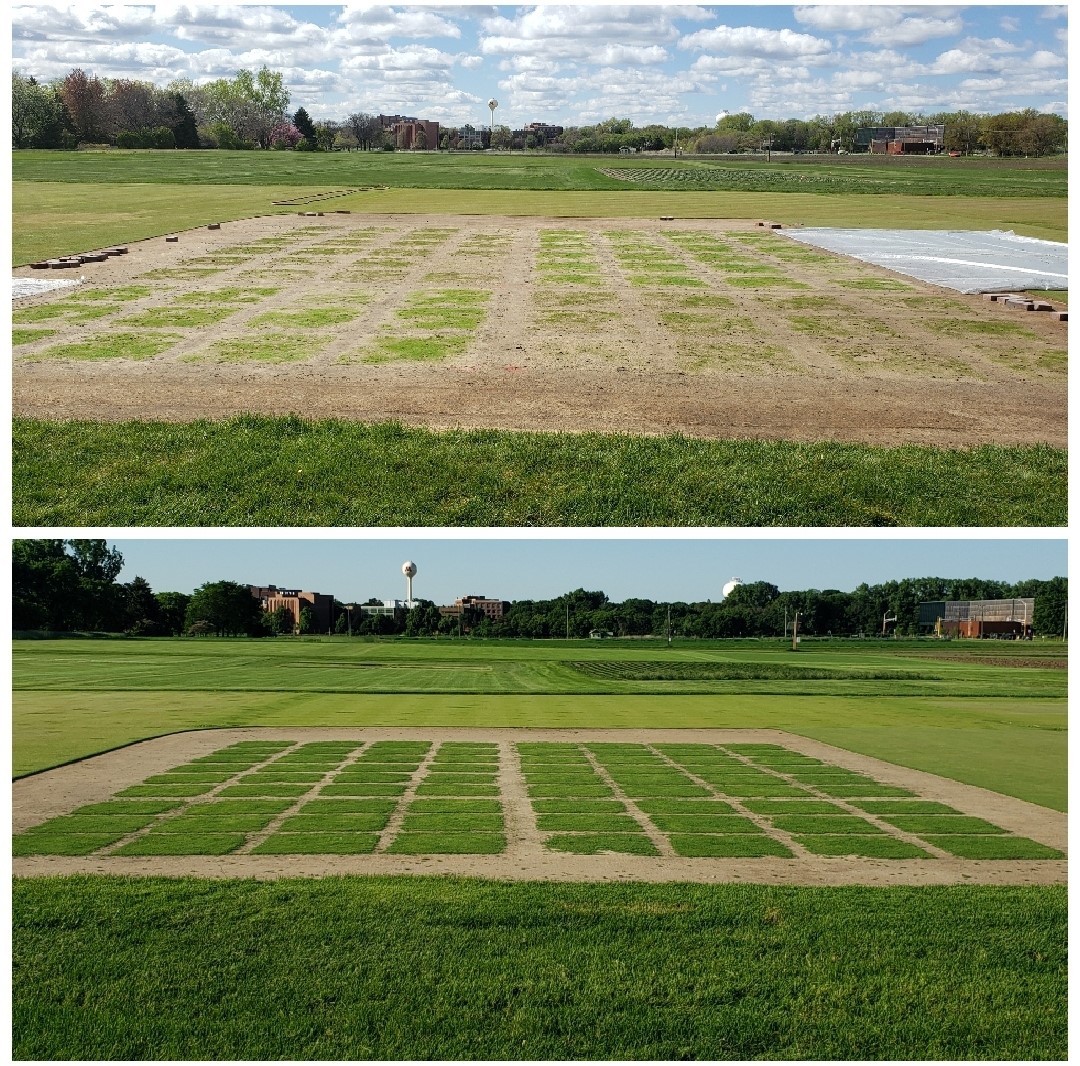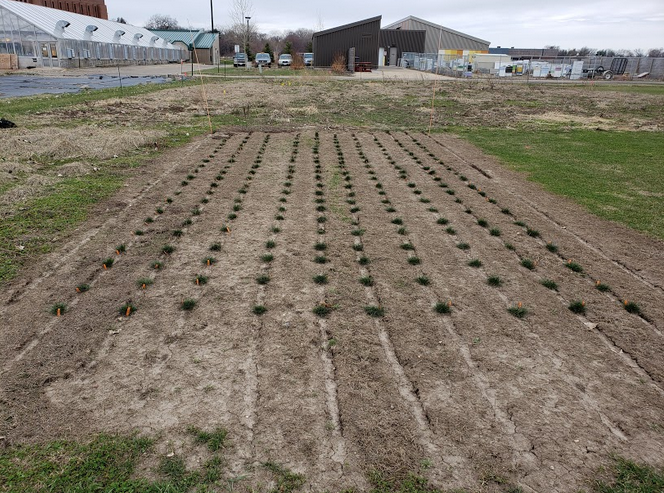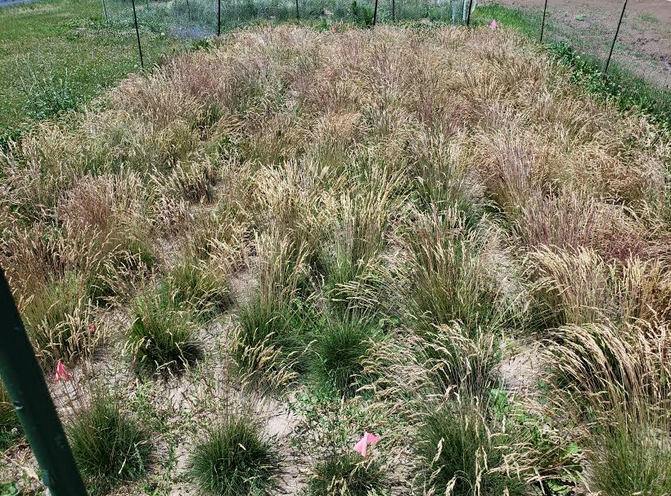By Gary Deters
As turfgrass managers we have a responsibility to observe the growth of the many varieties, cultivars, and species of turfgrass from seed to maturity. Pretty obvious, right? Observing growth is more than just looking at the turf with our own eyes from day to day. I have mentioned in a previous blog post about the importance of before and after photos and while they can be a great resource (Figure 1), there are more ways to see the progress of growth.
While working with the turfgrass researchers, the most impressive thing I have learned is the importance of data collection. The collection of data in many cases is the observation of growth because there is a comparison of previous collections to the newest set of data. The number of tillers, roots, and seed production are some plant growth examples that are a part of data collection. There are also times when we do not observe growth such as during times of dormancy in Kentucky bluegrass due to drought conditions.
Because there are so many turfgrass trials at the University of Minnesota, we have a chance to seed in new turf quite often. Not only is it fun, but it is satisfying to grow-in new turf plots for observation. The turfgrass researchers eventually rate the plots to find the best (or worst) of what they are looking for; color, weed and disease resistance, heat tolerance, seed production, and many more qualities.
From species to species, turfgrasses grow at different paces and there are a lot of differences. Also, there are many things that change the rate at which grass grows. Temperatures, fertilizer, water, stress, and growth regulators are definitely some factors. Often the combination of those factors can really change what we see from day to day and week to week. Following a fertilizer application with the addition of water and optimal growing temperatures, there is a really good chance an increase in mowing frequency will be needed.
Observing the growth of a staff person or an individual has been one of my favorite things about managing people. At the University of Minnesota, we have a chance to work with students who want to grow in their knowledge. It has been very rewarding to observe the research of our graduate and PhD students. The work being conducted will be very helpful to roadside turfgrass selections, low input sod selections, and perennial ryegrass seed production. We also train individuals on the care of mowing our research plots and there is always a “first time”. It usually takes practice to mow a straight line, turn correctly, or to not miss a spot, but eventually the trainee will catch on.
As a golf course superintendent, my favorite story of growth is when we hired someone who just graduated from high school to work on the staff. This particular person was very quiet and didn’t say much in his first season. He stayed with us the entire time he was in college and by the time he left us, he was one of the leaders of the staff. It was satisfying to observe his growth and development from high school graduate to college graduate.
The personal growth I have observed since I have been with the turfgrass science group has been fulfilling. I have been exposed to many different turfgrass varieties and procedures that have helped me become a more knowledgeable turfgrass manager. Being able to observe tall and fine fescue on a daily basis has helped me learn their true value to the turf industry and the public (Figures 2 and 3). Personal growth will always be a work in progress, as goals change, new procedures come about, and new varieties to learn improve my knowledge.
Observing growth in plants, others, and myself have always been a part of being in the turfgrass industry and I am looking forward to new challenges as the years go by.


